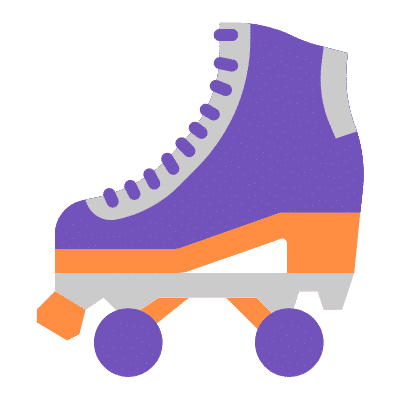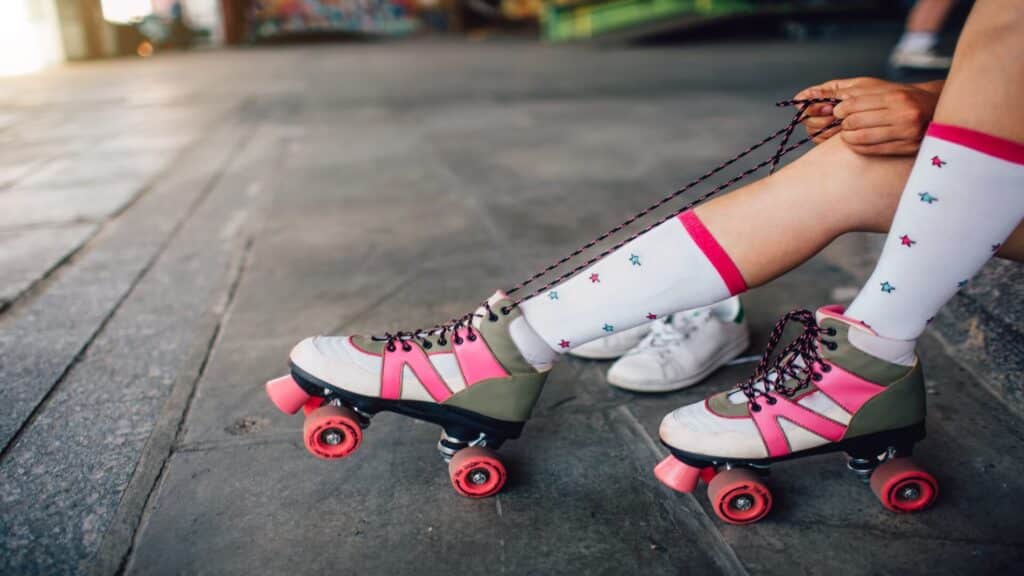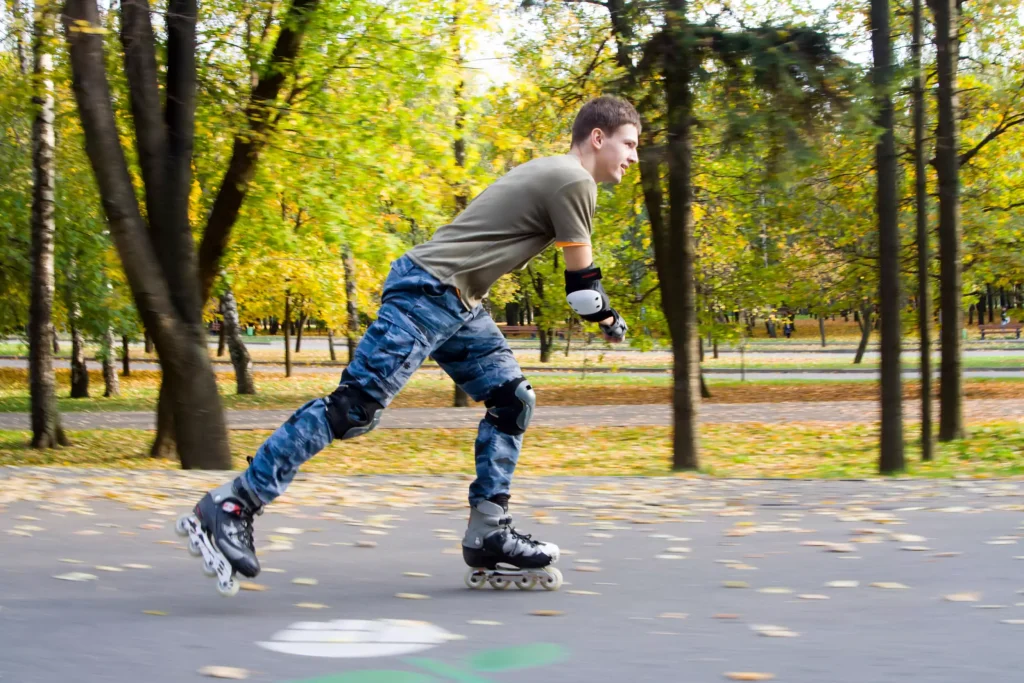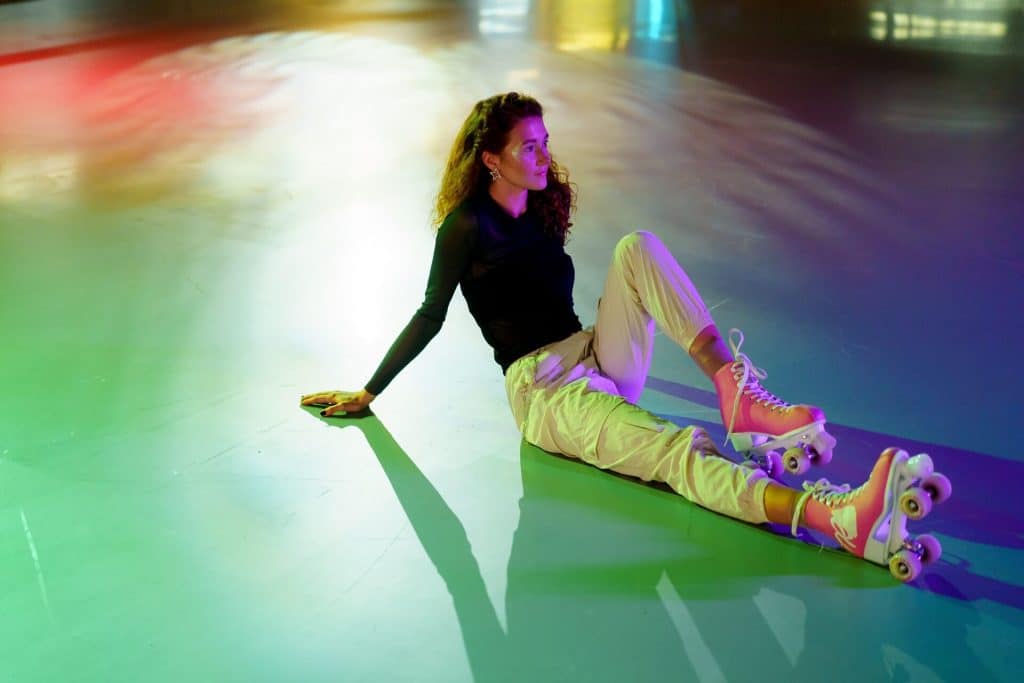Roller skating is a fun and exhilarating activity, offering an exciting mix of speed, balance, and control. One of the most crucial skills in roller skating is learning how to turn around. This guide aims to provide a comprehensive approach to mastering this maneuver, ensuring you can enjoy your skating journey with safety and confidence.
Table of Contents
Preparing for the Turn
Choosing the Right Roller Skates
Selecting the right roller skates is the first step in learning how to turn around on roller skates. The skates must fit well, snug but not too tight, to provide the right balance and support. There are different types of roller skates, such as inline skates and quad skates, each offering different benefits for turning.
Inline Skates
Inline skates, also known as rollerblades, have wheels lined up in a single row under the boot. This streamlined design makes them fast and maneuverable. However, having all wheels in one line can make it more challenging to balance and turn compared to other skate types.
Beginners may find it easier to learn on quad skates first before transitioning to inline skates. The linear configuration of wheels requires you to shift your weight and balance precisely to pivot and turn. But with practice, inline skates give you great freedom of motion for fluid turns once you get the hang of them.
Quad Skates
Quad skates have two parallel sets of two wheels on each boot. This wider wheelbase provides more lateral stability compared to inline skates, making it easier for beginners to balance and maneuver.
The broad platform of quad skates gives you a bigger “sweet spot” to distribute your weight when pivoting and turning. This makes turning feel more stable and controlled. Quad skates allow for very tight, graceful turns with the right technique.
The wider wheelbase does limit overall speed compared to inlines. However many expert artistic and roller dance skaters prefer quad skates precisely for their superior turning capability and control.
Consider starting on quad skates if you are new to roller skating. Their intrinsic stability will help you master basic turns with confidence before moving on to the steeper learning curve of inline skates.
Safety Measures
Safety should always come first when roller skating. Wear protective gear, including a helmet, knee and elbow pads, and wrist guards. Also, make sure to practice in a safe, open area free of traffic and obstacles.
Basic Body Posture and Balance
Before you can learn how to rotate on roller skates, you must first master the basic body posture. Stand with your feet shoulder-width apart, bend your knees slightly, and lean forward a bit. This stance will help you maintain balance while skating and during turns.
Basic Skating Techniques
Forward Skating
Before attempting to turn, ensure you are comfortable with forward skating. Glide smoothly with one foot following the other, maintaining your balance throughout.
How to Stop Safely
Learning to stop safely is as important as learning to move. There are various stopping techniques, like the T-stop or plow stop, which involve shifting your weight and aligning your skates to slow down and stop.
Just Before we begin and give you the instructions and methods we would like to show you two tutorial videos from the YouTube channel of Dirty School of Skate that can help you learn how to rotate on roller skates:
Proper Stance and Form for Turning
Mastering proper stance, foot positioning, and weight distribution is critical for performing smooth, controlled turns on roller skates. Here are some key tips:
- Stance – Stand with feet shoulder-width apart, knees slightly bent, and posture upright but leaning slightly forward. This athletic stance will help you balance and shift weight. Keep your head up and your eyes focused in the direction you want to turn.
- Foot Position – Point feet outwards at a 45-degree angle from the center when in stance position. This creates a stable, balanced platform to pivot from. Rotate feet inward when preparing to turn front or back.
- Weight Distribution – Even weight on both feet during forward skating. Transfer weight to the foot you want to turn on. Keep weight centered over that foot’s wheels throughout the pivot motion.
- Lead Foot – Shift 70% of the weight to the lead foot (front foot in the direction of travel). Keep 30% weight on the back foot for stability.
- Head and Shoulders – Keep head and shoulders aligned with hips. Turn your head and eyes to lead the rotation of your body. Don’t twist your upper body independently.
- Knee Flexion – Use knee flexion to smoothly shift weight from one foot to the other. Soft knees also help absorb bumps.
Practice these foundation principles regularly to build muscle memory. Proper form is essential for executing tight, graceful turns.
Learning How to Turn Around on Roller Skates
Now that you’ve mastered the basics, let’s dive into how to turn around on roller skates.
The Pivot Method
- Starting Position: Start by skating forward at a comfortable speed. Keep your knees slightly bent and your body upright.
- Pivoting the Body: Shift your weight to one skate. Lift the other foot and rotate it 180 degrees, placing it back down in the direction you want to turn.
- Completing the Turn: Shift your weight to the rotated foot and lift your other foot, turning it to face the same direction. Now both feet should be facing the new direction.
The Mohawk Turn
- Starting Position: Glide forward with your knees slightly bent and your body upright.
- Performing the Mohawk Turn: Turn one foot out to the side and then the other, so they are pointing in opposite directions. This stance resembles a ballet move known as the plié.
- Completing the Turn: Shift your weight to your back foot and pivot on it, lifting your front foot and placing it down to face the direction you want to go. Then, shift your weight to the front foot and pivot your back foot to face the same direction.
Common Mistakes and Corrections
Turning on skates takes practice. Be patient with yourself as you build coordination and muscle memory. Here are some common mistakes beginners make, along with tips to help correct them:
- Turning Upper Body First – Don’t twist your shoulders and upper body before your feet pivot. This throws off your center of gravity. Always turn your head and eyes first, then pivot your feet to follow.
- Shifting Weight Too Suddenly – Smoothly transition weight from one foot to the other using your knees as shock absorbers. Drastic weight shifts can destabilize you.
- Looking Down – Keep your head level, and eyes focused in the direction of the turn. Looking down throws off balance and direction.
- Turning Too Quickly – Take turns slowly at first, even if that means taking extra rolls to complete the pivot. Speed will come naturally with practice.
- Poor Weight Distribution – Evenly distribute weight on both feet during forward skating. Transfer full weight to the turning foot before pivoting.
- Lifted Heel or Toe – Keep wheels flat on the ground. Lifting heels or toes strains ankles and reduces stability.
- Rushing the Process – Be patient with yourself and break turns down into individual steps before combining them. Rushing leads to falls.
By being mindful of these common mistakes, you can recognize and correct any errors that sneak into your technique. With regular practice, turning will become second nature.
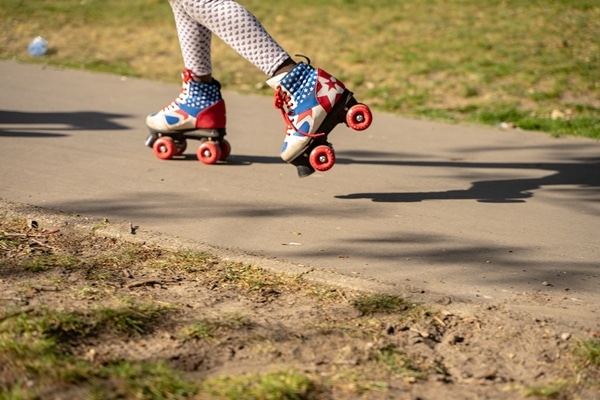
Improving Your Transition From Forward To Backward
Importance of Regular Practice
Like any other skill, regular practice is crucial for mastering how to rotate on roller skates.
Drills for Improving Balance and Control
Before trying to turn, new skaters should practice drills to improve overall balance, stability, and control. Mastering these foundation skills will make learning the transition from forward to backward much easier. Helpful drills include:
- One-Foot Glides – Glide forward on one foot, then the other. Repeat while gradually increasing distance. Work up to holding for 10 seconds.
- Curving – Lean gently to one side to curve your path, then the other side. Gets you used to shifting weight.
- Skate backward – Glide backward from a standing position. Look over your shoulder. Strengthens ankle stability.
- Crossovers – Practice crossing one foot over the other while gliding forward. Teaches weight transfer.
- Slalom Courses – Set up a simple course of cones and weave through them to improve edge control.
- Stance Drills – Practice bending knees, shifting weight from side to side, and finding a balanced stance.
- Stopping – Master different stop methods like the T-stop, turn-around toe stop, and plow stop.
Focus on quality over quantity when first trying these drills. Repeat them regularly even after you progress to turns. Balance and control will always be the foundation for mastering new skills.
Tips for Increasing Speed and Precision in Turning
Once you’re comfortable with turning, you can start to increase your speed. Remember to always maintain control and balance, even at higher speeds. Precision comes with practice, so repeat your turns often and make adjustments as needed.
Outdoor vs. Indoor Turning Techniques
Turning technique will vary slightly depending on whether you are skating outdoors on asphalt or concrete versus indoors on a polished wooden rink.
Outdoor Turning
Outdoor surfaces like sidewalks or blacktops have more friction and traction. This allows you to dig your wheels in more for sharper pivots and turns. Shift your weight aggressively and use momentum to carve tight turns on asphalt.
Indoor Turning
Indoor rinks have hard, slippery surfaces. This reduced traction requires a more controlled, fluid-turning technique. Subtly transfer weight from edge to edge, use knee flexion to absorb pivots, and manage momentum for smooth turns. Avoid jerky movements.
For outdoor skating, larger, softer wheels around 78A-80A hardness allow you to grip more. Smaller, harder wheels are best for slick indoor rinks.
Practice turning on different surfaces. While the fundamentals stay the same, you’ll learn to adapt your technique based on current traction and momentum. This versatility will improve your skills.
Now that you know how to turn around this is the perfect time to learn how to spin on roller skates.
Final Thoughts
Mastering how to rotate on roller skates is a skill requiring patience, regular practice, and an unwavering focus on safety. No matter your experience level, always wear protective gear like helmets, pads, and wrist guards when skating. Take things slowly and methodically as you build coordination and muscle memory. Don’t get discouraged by falls or mistakes along the way – they are part of the learning process.
With consistent practice, what once seemed impossible will start to feel natural. You’ll graduate from shaky beginner turns to fluid, graceful pivots, and effortless backward skating. Learning to turn properly truly unlocks the full potential of roller skating. New vistas open up when you can confidently skate in any direction your heart desires.
While the turning technique requires concentration, don’t forget the sheer childlike joy of rolling freely. Laughter and playfulness are just as key as drills. Let yourself be present in the moment, feeling the wind brush your face as you turn and curve.
Roller skating is a journey of continuous self-improvement. But it’s also about the freedom, expressiveness, and fun when our skates move in harmony with our bodies. Keep practicing, take care of yourself, and enjoy the ride wherever it may take you!


